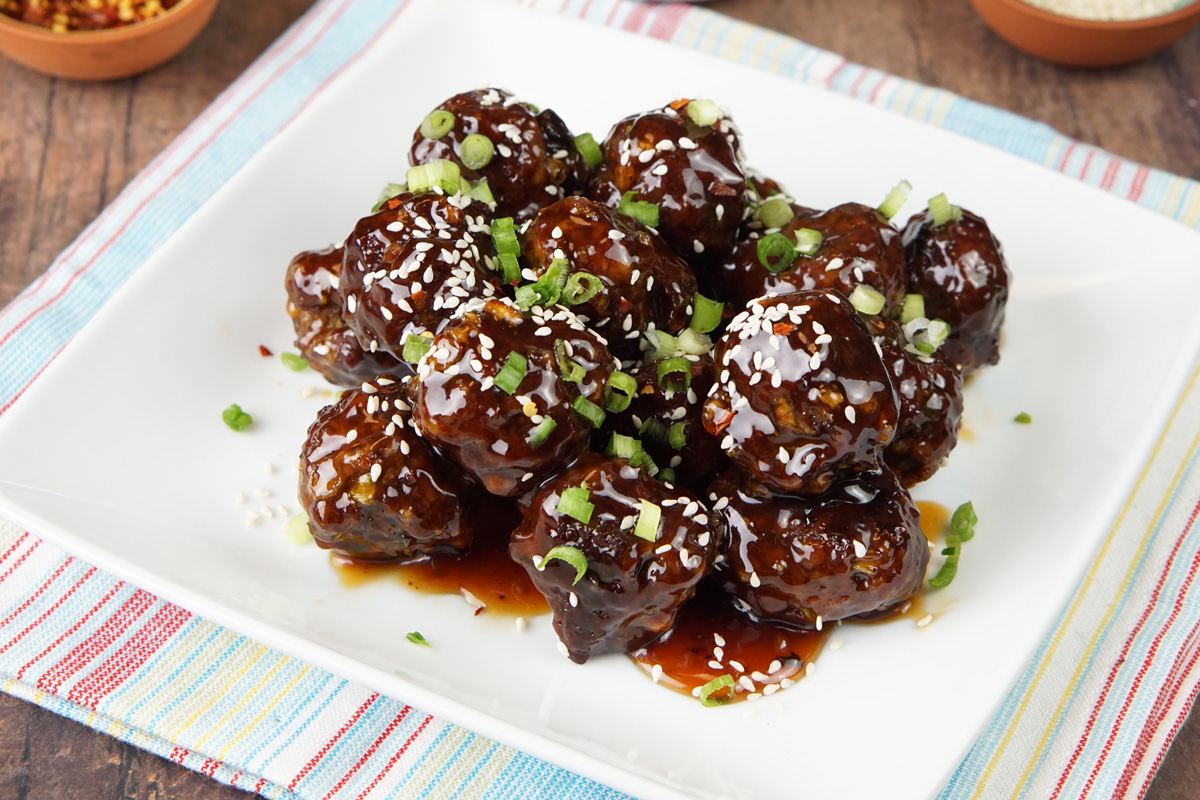From the vibrant streets of Bangkok to cozy kitchens in Brooklyn, food trends are reshaping how people cook at home in 2025. As global connectivity increases and social media amplifies culinary innovations, home cooks worldwide are embracing bold flavors, sustainable practices, and creative techniques that were once confined to professional kitchens.

The Global Kitchen Revolution
The pandemic fundamentally changed home cooking habits, and those changes have persisted. More than two-thirds of consumers globally prepare home-cooked meals weekly or daily, with 78% of U.S. consumers reporting they eat at home more frequently to save money amid rising food costs. This shift has created unprecedented opportunities for culinary exploration within domestic kitchens.
“We’re seeing a complete transformation in how people approach cooking at home,” said Ben Farber, President at Bristol Associates, a food and beverage recruiter. “Home cooks are no longer satisfied with basic recipes. They’re demanding restaurant-quality experiences, global flavors, and innovative ingredients that challenge their skills and expand their palates.”
Southeast Asian Flavors Take Center Stage
Southeast Asian cuisines are experiencing remarkable growth in home kitchens worldwide. Korean, Vietnamese, and Filipino cuisines topped recent industry surveys, with ingredients like gochujang, fish sauce, and calamansi becoming pantry staples far beyond their countries of origin. This trend reflects both increased travel and the power of social media to spread culinary knowledge across borders.
The appeal extends beyond novelty. These cuisines offer complex flavor profiles that home cooks find both challenging and rewarding to master. Traditional dishes like Malaysian laksa and Thai curries are being recreated in kitchens from Toronto to Sydney, often with locally sourced ingredients that maintain authenticity while embracing regional availability.

Fusion and Creative Mashups
One of the most exciting trends transforming home cooking is the rise of fusion cuisine and creative mashups. Home cooks are confidently blending culinary traditions to create entirely new dishes. Mac and cheese pizza, Korean-Mexican fusion tacos, and Japanese-Italian hybrid pasta dishes are just the beginning of this global culinary conversation.
“The fusion movement isn’t just about throwing random ingredients together,” Farber explained. “Modern home cooks are educated and intentional. They understand the fundamentals of different cuisines and know how to marry flavors respectfully. It’s culinary creativity backed by genuine knowledge.”
This trend particularly resonates with younger generations. Millennials and Gen Z consumers are 37% more likely to believe their food choices impact the environment and actively seek diverse culinary experiences that reflect their values and global perspective.

The Slow Baking Renaissance
After the sourdough frenzy of early pandemic days subsided, many predicted home baking would decline. Instead, a more thoughtful baking renaissance has emerged. Home cooks are dedicating weekend time to elaborate desserts and complex baking projects, viewing the process as a form of meditation and digital detox.
As of November 2021, 44% of Americans had tried making a social media food trend, and 36% reported that social media changed how they approach cooking at home. This digital influence continues to drive interest in photogenic, elaborate baked goods that combine nostalgia with technical skill.
Spice Revolution and Heat Seekers
Complex spicy flavors are dominating home kitchens in 2025, with consumers seeking layered, nuanced heat rather than simple burn. Habaneros from the Caribbean, Thai bird’s eye chilies, and Ethiopian berbere spice blends are finding homes in pantries worldwide. This isn’t just about intensity; it’s about depth and sophistication.
“The spice trend represents culinary maturity,” Farber noted. “Home cooks aren’t just chasing heat for heat’s sake. They’re exploring how different peppers and spice combinations create unique flavor experiences. It’s educated consumption driven by curiosity and adventure.”
Fast food outlets and home kitchens alike are experimenting with spicy variations of comfort foods, from chile-infused mac and cheese to hot honey drizzled over pizza. The global chile market reflects this enthusiasm, with traditional chile dishes from Malaysia, Trinidad, and Mexico inspiring home cooking experiments worldwide.

Sustainability and Hyper-Local Sourcing
Seasonal eating and hyper-local sourcing have evolved from niche movements to mainstream priorities. Farmers markets, produce subscription boxes, and community gardens are connecting home cooks directly with regional growers. This movement offers environmental benefits while fostering community connections and ensuring peak freshness.
Urban farming initiatives are addressing food deserts and bringing fresh produce to underserved communities. From rooftop gardens to balcony hydroponics, home cooks are increasingly growing their own herbs and vegetables, deepening their connection to ingredients and food systems.
Protein Innovation and Plant-Based Evolution
The plant-based movement has matured beyond basic meat substitutes. Home cooks are experimenting with mushroom-based proteins, mycelium bacon, and pulled shiitake preparations that showcase vegetables’ inherent qualities rather than simply mimicking meat. The global plant-based protein market reached $27.5 billion with projected growth to $47.4 billion by 2030.
“Plant-based cooking has become sophisticated,” said Farber. “It’s not about deprivation or substitution anymore. Home cooks are celebrating vegetables, legumes, and fungi as primary ingredients worthy of culinary attention. That’s a fundamental shift in thinking.”
Simultaneously, conventional protein consumption is evolving. Home cooks are expanding beyond salmon and shrimp to explore mahi mahi, barramundi, and yellowtail. This diversification reflects both environmental consciousness and culinary curiosity.

Convenience Meets Quality
Modern home cooks are redefining convenience without sacrificing quality. One-pot meals, five-ingredient recipes, and sheet pan dinners are surging in popularity, driven by busy lifestyles and desire for efficiency. The meal kit industry and chef-inspired convenience products bridge the gap between scratch cooking and ready-made meals.
Home Chef created over 1,500 new recipes in 2024, reflecting strong demand for varied, convenient options. These services aren’t replacing cooking skills but enhancing them, providing exposure to new ingredients and techniques while minimizing planning and shopping time.
Tea Beyond the Teacup
Tea is emerging as a versatile cooking ingredient, appearing in desserts, marinades, and savory dishes. Matcha cookies, Thai iced tea mochi, and tea-infused caramels represent just the beginning. This trend offers home cooks new flavor dimensions while celebrating global tea traditions in innovative contexts.
The kombucha market alone is projected to reach $9.09 billion by 2030, growing at 13.5% annually. This fermented tea beverage appeals to health-conscious consumers while inspiring home fermentation experiments and creative cooking applications.
Value and Waste Reduction
Economic pressures are driving creative approaches to home cooking. With food prices predicted to increase 3% in 2025, home cooks are maximizing value through strategic shopping, creative use of leftovers, and waste reduction techniques. Freezing vegetable scraps for stock, nose-to-tail cooking, and complete pantry utilization are becoming standard practices.
Globally, 57% of consumers express concern about food waste, with different generations motivated by varying factors. Younger consumers prioritize environmental impact while older generations focus on financial responsibility, but both groups are actively seeking solutions through thoughtful cooking practices.
Looking Forward
The evolution of home cooking reflects broader cultural shifts toward sustainability, global awareness, and personal wellness. Social media continues amplifying trends, with 40% of consumers seeking dinner inspiration from friends and family while 38% turn to digital platforms. Video content on YouTube ranks above traditional cookbooks for younger generations, democratizing culinary education.
As home entertaining becomes more important, with 42% of consumers considering their homes more crucial for socializing than in previous years, the kitchen serves as both creative laboratory and community gathering space. One in four consumers invites family or friends for home-cooked meals weekly, transforming cooking from daily necessity into social ritual.
“The future of home cooking is incredibly bright,” Farber concluded. “We’re witnessing unprecedented culinary literacy and creativity at the home level. People aren’t just following recipes anymore; they’re understanding techniques, experimenting with flavors, and confidently creating their own culinary narratives. That’s transformative for both the food industry and our relationship with what we eat.”
From precision wellness and targeted nutrition to bold fusion experiments and sustainable practices, food trends are empowering home cooks worldwide to explore, create, and connect through shared meals. The global kitchen has never been more exciting, accessible, or diverse.

Laura is a home cook, with 25 years experience behind the stove, who spends an extraordinary amount of time in the kitchen cooking. She loves making new recipes and finding wonderful new things to eat, both at home or abroad. She spends a lot of time researching, crafting, and perfecting her recipes.
